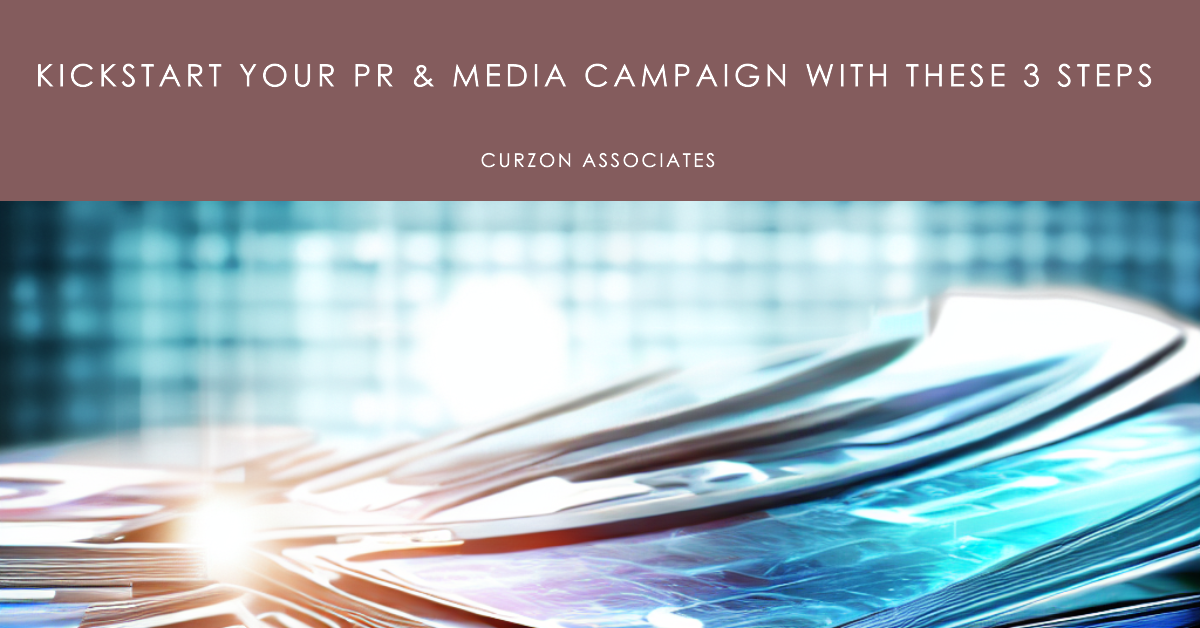Kickstart Your PR & Media Campaign With These 3 Steps
Building a targeted media campaign is a simple process. But it takes know-how, research and effort. However the initial time spent at this task – and in subsequently revisiting and updating it – can define the success and credibility of your 3rd party storytelling effort.
Media coverage is for innovators as much as for bigger tech firms, and ambitious SME tech firms should begin to see the benefits of a targeted media campaign – media coverage, mindshare, and the resulting third party collateral, social media engagement, and a live press page – within 6 - 10 weeks of an initial briefing, and sometimes sooner.
Remember, even in these days of endless self-generated content, and all the other one-way marketing communications techniques, good media coverage is still regarded by technology purchase decision as among the most influential sources of independent information. The media remains the most powerful of influencers.
Here are three things you need to know to quickly and effectively build your targeted media campaign:
Targeting
It’s called “targeted” for a reason. The idea is to really focus in on your audience. In doing so, you will be better able to choose the right publication and media contact to target and pitch to. In my experience, any given technology firm’s vertical media consists of no more than a dozen or so key publications at most, so find out which these are and which editors and writers you should approach.
This is the key to creating a targeted media campaign: knowing what and who you are looking for. This helps you concentrate on who isreally likely to pick-up your story and write about it, while saving on wasted effort pitching people who have only marginal interest.
So on the matter of building contact list, I have found that shorter contact lists are generally much more effective, as you can concentrate on high touch one-to-one communication with your identified journalists – in thismedium untargeted scattergun, so called 'growth hacking' techniques are wasted effort. Less is more.
Zeroing in on the Beat
This really does filter out the marginal. 'Warehouse robotics' is not the same as 'robotics'. 'Indoor location' 'UWB' and 'RTLS' are not the same as 'semiconductors'. Working in the tech sector has made me realise and appreciate how certain journalists really are experts in their field. For example Mallory Davis who edits ‘Logistics Manager’ really is an expert in logistics.
When choosing journalists to include in your circulation list, be very selective: always make sure to read through the beats they cover. Yes, some writers will cover more than one beat, so you really must decide whether or not they are worth pitching to. Contacting the wrong writer is a waste of everyone's time and will pronbably meet with dismissive hostility. Personally I like to read a journalists last 3 published articles before I decide whether they are worth the effort of pitching to.
Media Pitch
By zeroing in so tightly on your targets, you have done 2 things: you have made the job of pitching both easier and harder.
You have made it easier, because the person you are pitching to will understand the nuances of the pitch, and will be comfortable with the necessary industry background. They will have the background knowledge to see exactly where your solution fits in the scheme of things.
But you will also find that convincing someone with that depth of industry knowledge to write about you is harder. Editors of important industry journals guard their expertise jealously, and so they do not write about everyone who approaches them. And of course it is this exclusivity which makes their reputation. And it is also why technology firms want to be featured by them.
That is why putting the pitch together is so important - as is knowing what you need to have at hand to push your pitch over the line to publication:
- a member of your management team to talk to,
- pics of the relevant individuals and product,
- and if relevant, a third party quote from a customer
Having all of these to hand - for a quick response - can make the difference between getting published and getting spiked.
Dealing Face to Face with the Media is Not Easy!
A word of caution: making a media pitch in person to these editors can be a very daunting experience. At this level, editors and journalists can be short tempered and even intolerant. If you do manage to get them on the phone, you will likely encounter brusqueness and scepticism at best, and hostility at worst.
This is NOT a job for an office junior or intern – if you are lucky, you will get one chance to get it right to a very unforgiving audience. And this may well colour the way your releases and pitches are received in the future. So expecting an inexperienced member of staff to engage and convince an important influencer for your firm and product is a bad idea.
Developing and delivering a targeted media campaign can elevate your firm and its offerings above your competitors and your peers in the perception of your prospects, while also delivering a boost to your team, and industry imprimatur for any potential investors. This can all be delivered within a 3 month timeframe, and start or reassert your relationship with your industry media.
If you want to explore the possibilities of engaging with your media, please feel free to get in touch here
